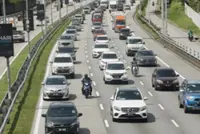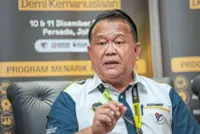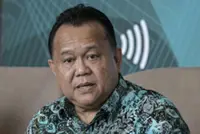Focus should be on improving rail transport instead of highways, an expert says.
TRAFFIC congestion in Klang Valley is similar to Vienna, Austria, some 40 years ago.
Its traffic problem was solved with the addition of buses and active transportation, namely walking and cycling, says Universiti Malaya Faculty of Engineering, Department of Civil Engineering senior lecturer Dr Suhana Koting.
Every city and country had its own characteristics and suitable solutions must be found for local needs, wants and affordability, she said.
“Malaysians will walk a maximum distance of 500m taking into account weather conditions.
“We have to understand why the newer MRT lines have not achieved the targeted ridership.
“We have to look into factors such as first and last mile for the public transport user.
“Is the park and ride expensive? What are the other factors?”
Suhana also said instead of building more highways, the authorities must look into ways to have more efficient public transport.
“We have double decker buses that are sharing the same road as private vehicles,” she said, adding that there should be more dedicated bus lanes to enable buses to move faster.
Suhana also called for a push to encourage walking and cycling.
“We need good sheltered walkways to promote walking.”
She said a congestion charge to drive into busy roads should be considered for private vehicle users.
“This has been done in cities like Singapore and London and it can be carried out here.”
The smart traffic management must be implemented whereby road integrated transport information system (ITIS) highlights options on travel routes depending on traffic situation.
Big data needs to be collected to give road users the information they need on route options.
She added that urban planning must encourage the use of public transport.
“A good example would be the KL Gateway where there is residential living on top of the mall and a connecting bridge from the premises to the LRT station.
“This will promote more use of public transport.
“People in Japan are willing to travel 200km to work because their transport systems are connected,” she said.
Suhana also encouraged organisations to consider remote working: “To bring down commuting, organisations could reduce the number of days people have to travel to the office for work.”
Staggering work hours would also be effective to see results on road traffic.
“Some organisation provide options and allow their staff to come to work at 7.30am or 8am.
“This can help ease traffic,” she said. — By SHEILA SRI PRIYA







